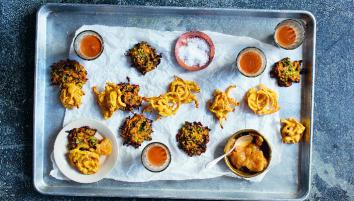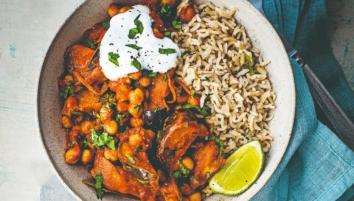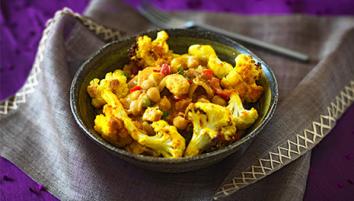
A mild-spiced bitesize selection of tasty veggie pakoras with a fresh, light dip.
Serves
10
Prep
15 minutes
Cook
15-20 minutes
Nutrition information
Each 105g serving contains (excludes serving suggestion)
- KCal
- 106
- Carbs
- 8.9g
- Fibre
- 2.5g
- Protein
- 5.1g
- Fat
-
5.0g
(Medium)
- Saturates
-
0.4g
(Low)
- Sugars
-
3.0g
(Low)
- Salt
-
0.17g
(Low)
Ingredients
Ingredients
- For the vegetables:
- 1 red pepper, chopped into chunks
- 1 courgette, chopped into batons
- 1 red onion, chopped into wedges
- 200g cauliflower, in florets
- For the dip:
- 50g fresh coriander, finely chopped
- 1 tsp cumin seeds, lightly crushed
- 150g 0% fat natural yogurt
- For the batter:
- 100g gram flour
- 1 tsp ground coriander
- 1 tsp ground turmeric
- 1 tsp garam masala
- 1 tsp ground cumin
- 1 green chilli, finely chopped
- half tsp bicarbonate soda
- 100ml water
- 400ml rapeseed oil
Method
Method
Recipe tips
- Due to the fact that the pakoras are fried, they are meant as an occasional treat.
- To make sure that the pakoras are not too fatty, the oil needs to be hot enough – in this case, 180ºC. This way, the cooking time will be less and the vegetables won’t be in the oil for very long. Using a cook’s thermometer is a good way of making sure the oil is at the right temperature.
- It’s possible to use a recipe for baked pakoras to reduce the amount of fat, but you need bigger pieces of vegetable chunks and a thicker batter. This way, the pakoras will hold together better.
- Make sure you use the right type of oil – and avoid ghee or dripping. Use rapeseed oil, as it’s better for the cooking process and is an unsaturated fat. Olive oil isn’t suited to frying.
- You could use most vegetables in this batter – try broccoli, aubergine, carrot sticks, spring onions, asparagus, baby corn or mushrooms.










